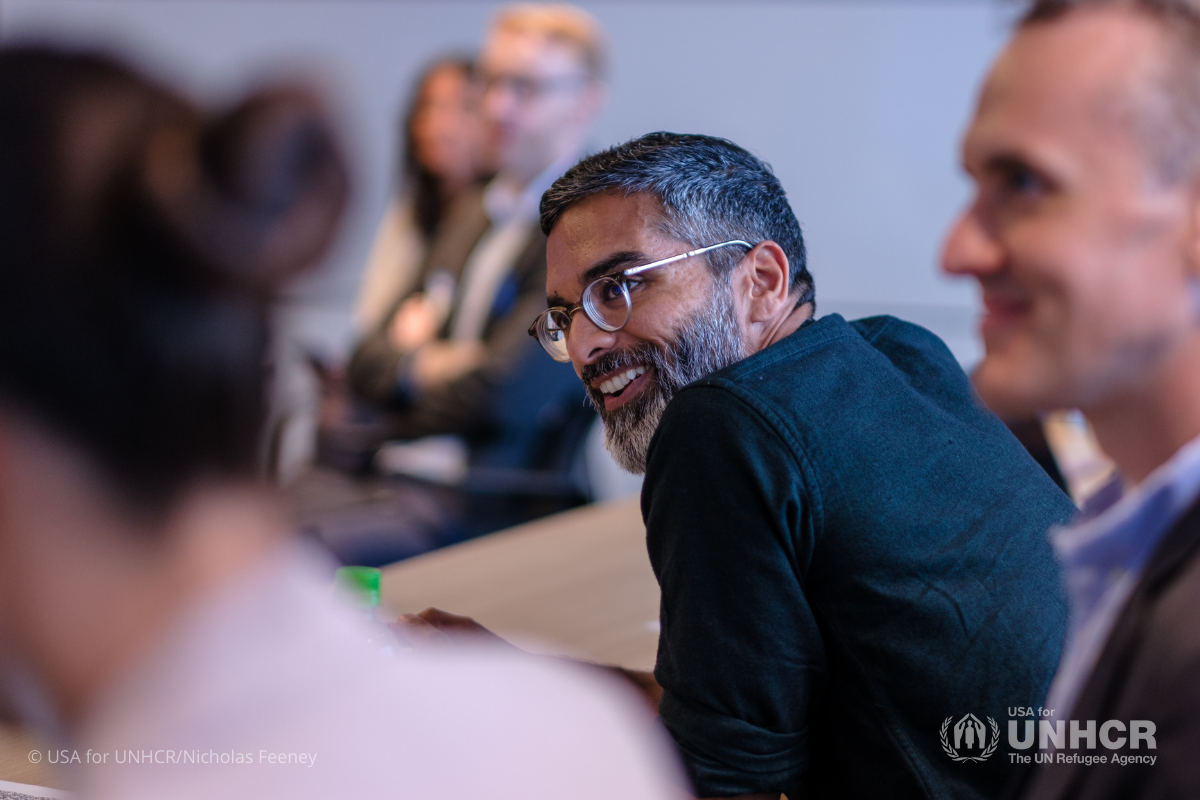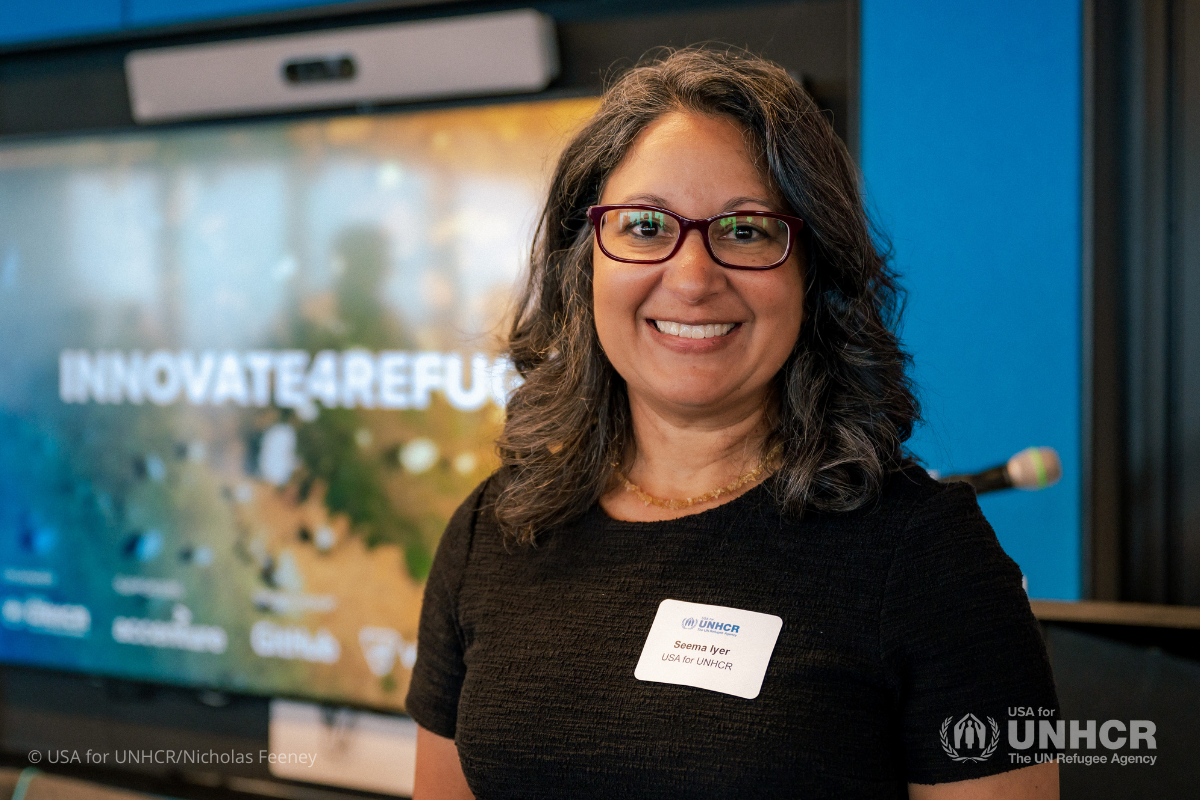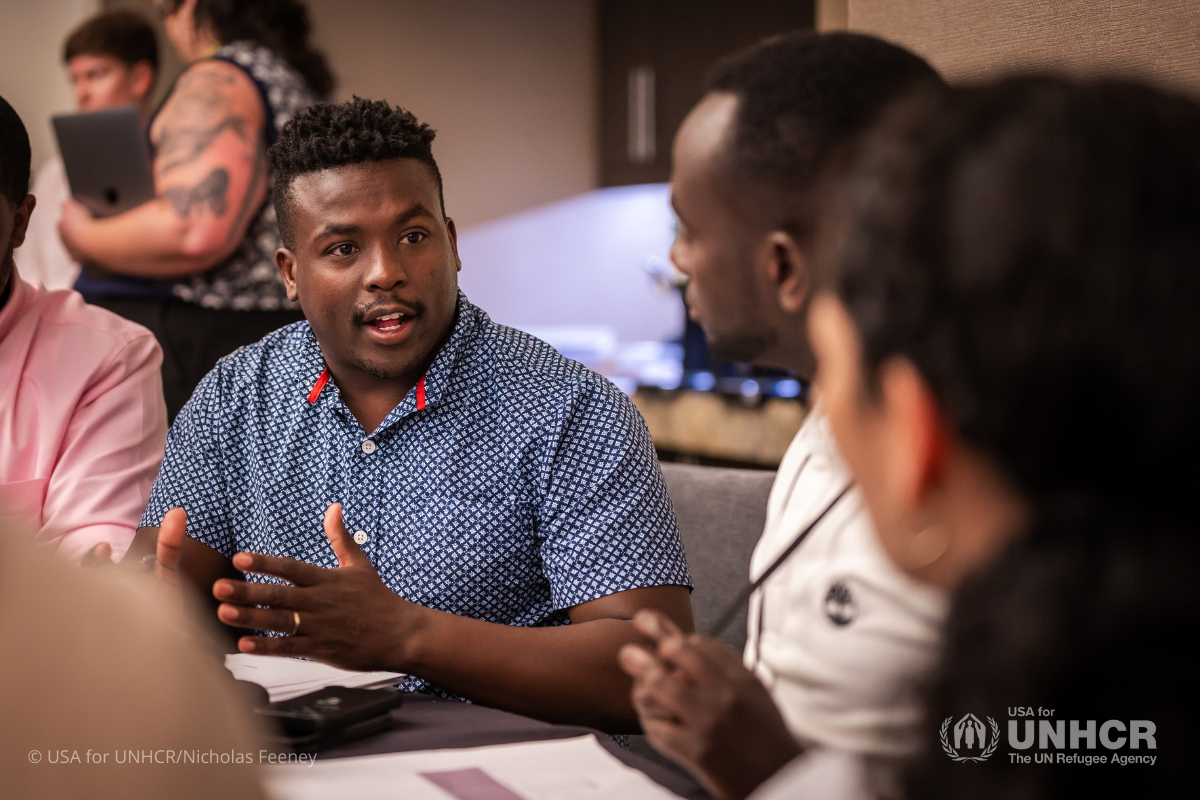Hive Advisory Board member breaks down how technology is helping deliver results for refugees
Gotam Bhardwaj is a member of USA for UNHCR’s Hive Advisory Board and the Co-Founder of Pairity, a collaboration between social and data scientists and technologists committed to responsibly using tech and data to increase resettlement and accelerate refugee integration. Pairity’s solutions overcome barriers to scaling, mobilize data for partners, and implement rigorous monitoring and evaluation frameworks to improve outcomes. Prior to co-founding Pairity, Gotam worked in the edtech, labor tech and cybersecurity sectors.
We recently spoke with Gotam about the role technology plays in delivering solutions for refugees and how the Hive Advisory Board is playing an essential role.

Can you share what work Pairity does and how it supports refugees?
At Pairity, we collect refugee information and preferences to help when it comes time to resettling them to communities or matching to housing, sponsors or services. Pairity focuses on collecting data and information, then algorithmically matching refugee families to resources to help them integrate and succeed. And then once they are matched and they arrive in a new community, we collect more data to understand how they're integrating. We’re able to use data to advocate for better welcoming policies and help our partners on the ground figure out what's working and what's not working.
What was your path to co-founding Pairity and working with refugees?
I was in the private sector for the bulk of my career. I was in labor tech, ed tech and cybersecurity. One of Pairity’s co-founders had helped start an NGO that was matching people who wanted to help refugees but didn’t know how to. However, the process of matching sponsors and volunteers to refugees was not a data-driven process. We looked at the resettlement space more broadly and found that because data was not being used, and matching rarely accounted for preferences, that refugees were often sent to communities that didn't fit them, or sponsors might be paired with refugees with language differences. We also saw significant scaling barriers and implicit bias in matching projects, but recognized that technology could help overcome these issues and improve systems. And so we hatched this idea to say, "Let's try to use data and technology to do this." And that was born four or five years ago now, and we've helped match hundreds of refugees with sponsors, communities, housing and other resources globally to date.

What are some of the key technologies being used to deliver results for refugees and refugee supporting organizations?
One significant area technology is being used is in the space of data collection and data management. For refugees, this is all about getting data and information from them to center solutions around their lived experiences. Co-designing solutions with refugees is key but a lot of times it’s not happening.
When I learned about the Hive at last year’s Innovate4Refugees event, I was really excited to see the work UNHCR was doing in the space and bringing refugees into the process. One example of how the Hive has tried to co-design with refugees is on a drone image mapping project of the Kakuma refugee camp in Kenya. Part of the project involved skills training for refugees living in the camp and they played an active role in the model training. When I learned about that, I thought that was really cool.
For organizations like UNHCR, data collection and management allow for analytics that identify trends, optimize resource allocation, and help with better decision-making.
Why did you decide to join the Hive Advisory Board (HAB)?
When I went to Innovate4Refugees last year, it was very apparent that USA for UNHCR is thinking of the big picture. They're thinking about bringing different stakeholders to the table and responsibly using tech for use and co-design.
That really resonated with me. Having served on the HAB for six months and seeing how they approach their work internally has only strengthened my conviction of why I wanted to join.
The HAB brings together such a diverse set of people from different backgrounds, bringing all these different viewpoints. And I've been on calls and think to myself, "Oh, I didn't consider that. That's someone who has really good experience in this."
There's a real opportunity through the HAB to foster partnerships and collaboration with other organizations. There's a lot of public-private sector bridges the HAB can do and I think those collaborations and partnerships could be really useful. And ultimately, at the end of the day, it all goes back to creating solutions that help address the global refugee crisis because that's what USA for UNHCR is doing.
How to Help…
UNHCR, the UN Refugee Agency supports the full journey of refugees who have been forced to flee violence, war and persecution. Our donors help refugees in their greatest time of need with shelter, food, water and medical care, and their support builds awareness for resettled refugees living in the U.S. With your help, more refugees will have the opportunity to build peaceful lives and give their families a bright future.


